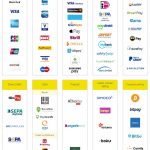In an increasingly digital world, your smartphone is more than just a communication device; it’s a mobile bank branch. The convenience of checking balances, transferring funds, and paying bills from the palm of your hand is undeniable. However, this convenience comes with a critical responsibility: safeguarding your financial data. While banks and FinTech companies employ sophisticated security measures, the user remains the first and most important line of defense. Here are the essential tips for ensuring your mobile banking experience is as secure as it is convenient.
1. Secure Your Device First
Your phone itself is the gateway to your financial life. If it’s not secure, your banking app isn’t either.
- Lock Your Screen: This is the most basic and vital step. Use a strong passcode, a complex pattern, or, even better, biometric authentication like a fingerprint or facial recognition. Make sure your device is set to lock automatically after a short period of inactivity.
- Keep Your Software Updated: Regular updates for your phone’s operating system and your banking apps are not just for new features. They often contain critical security patches that protect against new threats and vulnerabilities. Don’t delay—install updates as soon as they’re available.
- Avoid “Jailbreaking” or “Rooting”: Modifying your phone’s operating system by jailbreaking or rooting can bypass built-in security features, making your device and its data extremely vulnerable to malware and attacks.
- Install Antivirus and Anti-Malware Software: Consider installing a reputable security application on your phone. These apps can help detect and remove malicious software that could be designed to steal your personal or financial information.
2. Be Mindful of Your Digital Environment
The network you’re connected to and the apps you use can expose your data to risk.
- Avoid Public Wi-Fi for Banking: Public Wi-Fi networks in coffee shops, airports, and hotels are often unencrypted and unsecured. Hackers can easily “eavesdrop” on your data, intercepting sensitive information like your login credentials and transaction details. Use your mobile data plan or a Virtual Private Network (VPN) for an encrypted connection when accessing your banking app outside of a trusted private network.
- Download Apps from Official Sources Only: Always download your bank’s official app from the Google Play Store or Apple App Store. Be wary of lookalike or fake apps that mimic legitimate banking apps to steal your information. A quick check of the developer name, number of downloads, and reviews can help you verify its authenticity.
- Beware of Phishing Scams: Never click on links in unsolicited emails or text messages that claim to be from your bank. Your bank will never ask you for your password, PIN, or other sensitive information via email or text. If you suspect a message is fraudulent, go directly to your bank’s official website or app to log in.
3. Practice Strong Authentication and Account Management
Your personal habits are the final layer of defense.
- Enable Multi-Factor Authentication (MFA): This is a non-negotiable step. MFA requires a second form of verification beyond your password, such as a one-time code sent to your phone or a biometric scan. This makes it significantly harder for a fraudster to access your account even if they have your password.
- Use Strong, Unique Passwords: Create a complex, unique password for your mobile banking app that is different from your other online accounts. A good password is at least 12 characters long and includes a mix of uppercase letters, lowercase letters, numbers, and symbols.
- Log Out After Every Session: It’s a simple step that is often overlooked. Simply closing the app may not be enough to end your session. Always use the log-out button to ensure your connection is securely severed, especially on a shared or public device.
- Monitor Your Accounts Regularly: Actively review your account balances and transaction history. Many banks offer customizable alerts that notify you of large purchases, withdrawals, or other unusual activity. By staying vigilant, you can spot and report fraudulent transactions immediately.
- Limit Stored Information: Do not save your passwords, credit card numbers, or other sensitive information in your phone’s notepad, browser, or any other unsecured app.
By adopting these simple but powerful security habits, you can protect yourself from the majority of cyber threats. While the technology behind mobile banking is incredibly secure, your informed and vigilant use of these apps is the ultimate safeguard for your financial well-being.










